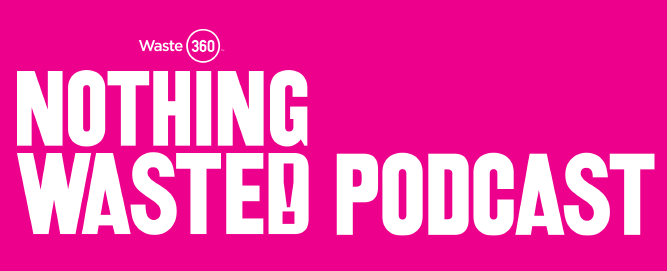Meet Emily Tipaldo, Executive Director of the U.S. Plastics Pact—and one of our 2023 Waste360 40 Under 40 winners. The U.S. Plastics Pact is a solutions-driven consortium founded by The Recycling Partnership and the World Wildlife Fund. It connects diverse public-private stakeholders across the plastics value chain to rethink the way we design, use, and reuse plastics, with an eye towards realizing a circular economy for plastics in the U.S.
In our latest episode of NothingWasted!, we spoke with Tipaldo about the latest developments and progress regarding the Pact, the future of packaging, managing stakeholders and more.
Here is a sneak peek into the discussion:
Waste360: Can you tell us a little about your journey to the U.S. Plastics Pact?
Tipaldo: My background is not a hard-science background. It was after I got my master’s degree that I became really interested in policy, but I wasn’t interested in working on Capitol Hill. I wanted some way to interact with policy and found my way to the American Chemistry Council, where I worked on their regulatory group and later the plastics division. [Really] learning those skills of stakeholder management… understanding waste management and recycling; EPA’s datasets; how consumer-goods companies make decisions; learning the different players… After ten years, I moved to more recycling, a small mission-driven consulting firm. While I was there, I was recruited to lead the U.S. Plastics Pact, which finally kicked off in August of 2020.
Waste360: Looking at its baseline report, the pact had some aggressive goals focused on 2025. How are you feeling about the work that’s been done so far?
Tipaldo: We launched with very aggressive goals that are aligned with other plastics pacts globally (of which there are currently 13). The framework and genesis of our pact really comes from the Ellen MacArthur Foundation’s New Plastics Economy Global Pact and [a need to help] the companies who have signed on to it. If those companies are going to meet the commitments they have made globally, that has to play out in each of the markets in which they operate. That’s where the idea of in-country plastics pacts came from.
It’s a really interesting construct and the first time ever, that I know of, where multiple voluntary organizations across the globe are using the same terminology. It sounds trivial, but it’s so important. The fact that we have these organizations that represent hundreds of companies, using the same terminology and similar metrics…is so awesome. And getting people comfortable with annual reporting has been a big deal.
Waste360: Can you talk more about the member companies who have signed the pact?
Tipaldo: When we launched, we had 62 companies (known as “activators”) who signed on. Now we have over 120, and we are a unique group in that we span the entire value chain—everybody from resin producers and convertors to consumer-goods companies, retailers, and some equipment and technology providers, composters, non-profit folks…
Waste360: Can you tell us more about the “problematic and unnecessary” list?
Tipaldo: One of our targets is around reduction or elimination of things that are determined to be problematic or unnecessary in the system. There is a lot of consternation around the list, and it hasn’t been easy for a lot of folks to swallow. But, we are looking to build a circular economy for plastic packaging, and we need to look at what doesn’t fit into the system. Based on how we’re looking at recyclability, compostability, and design overall, are there things that maybe aren’t necessary to the performance of the packaging? Or, are there things that, based on the data we have, are contaminants to the recycling stream without the current investment to change them? I tell companies, if they are upset about something being on the list, “How are you engaging with others in your space to overcome this challenge?” The list currently has 11 items on it, broken down by category; it can be found on our website.
Listen to the full episode above.
#NothingWastedPodcast

